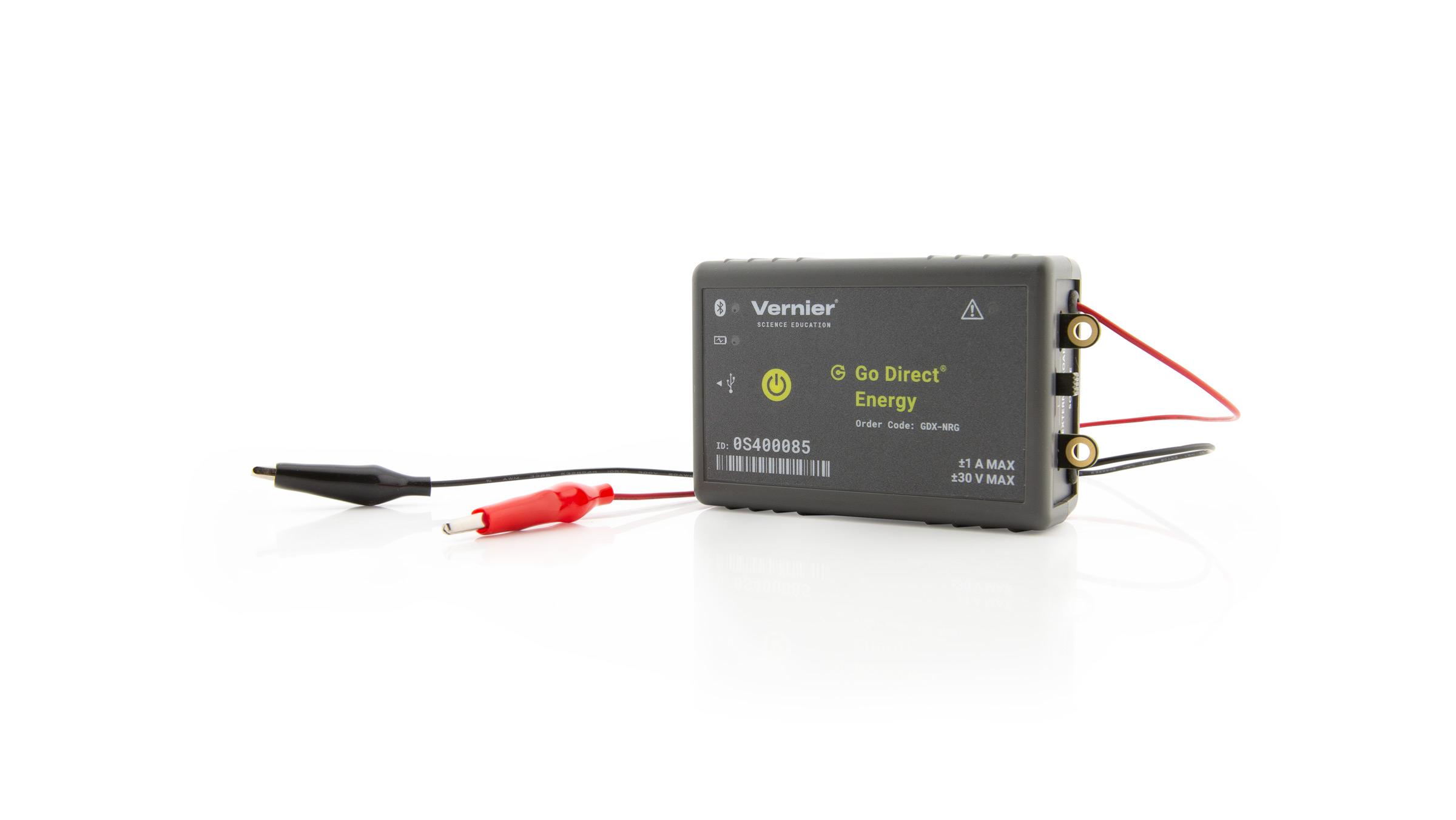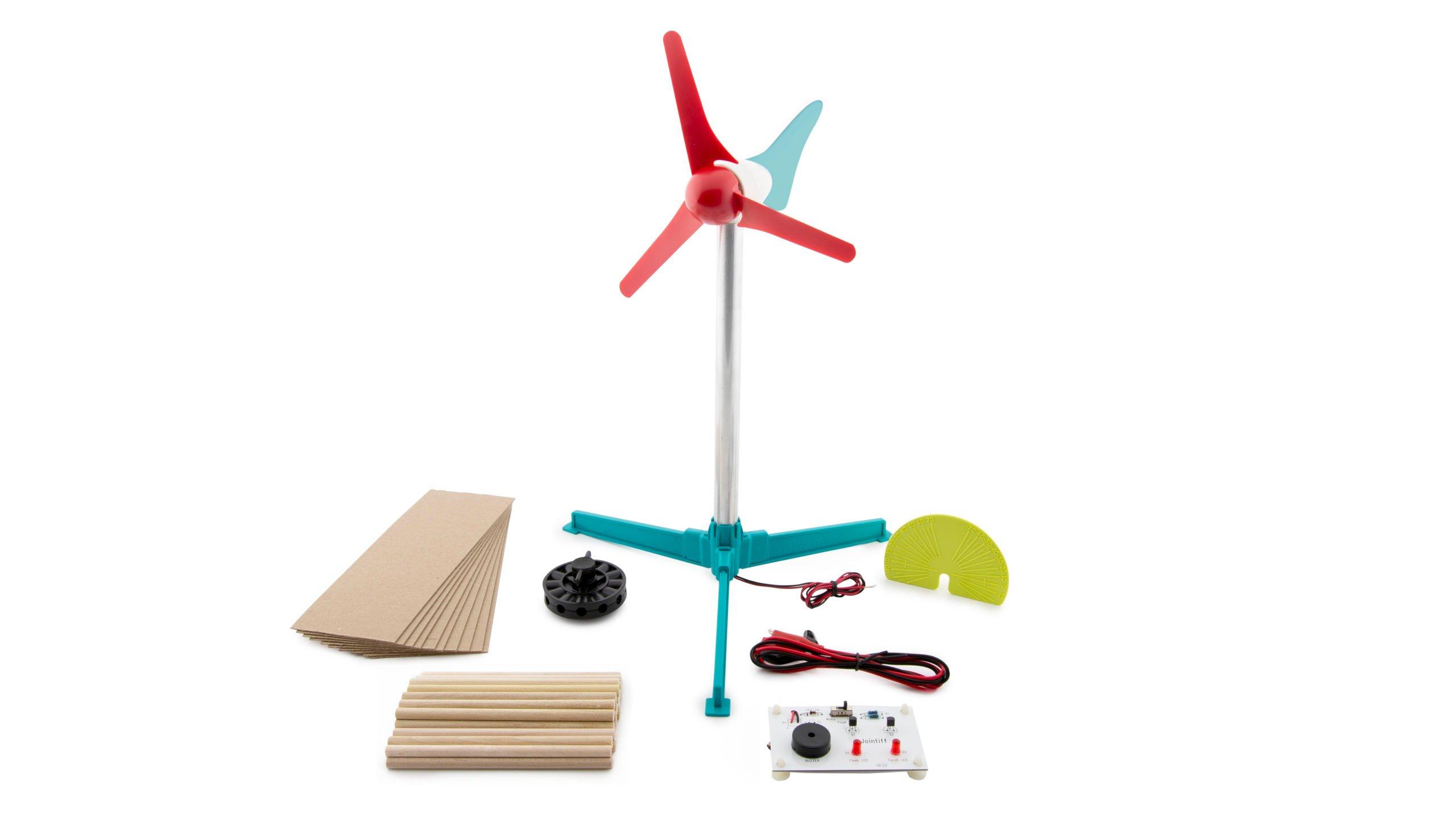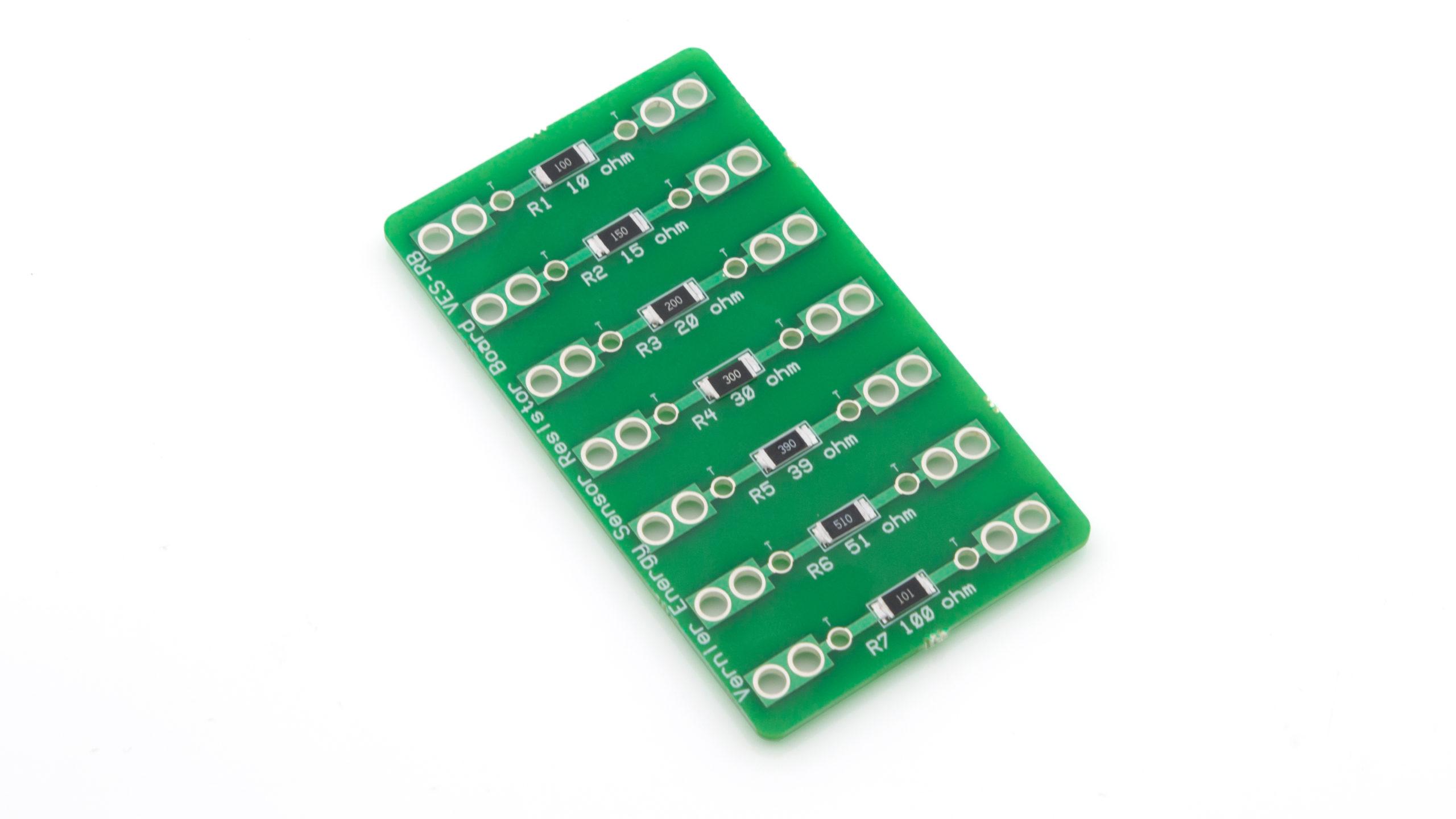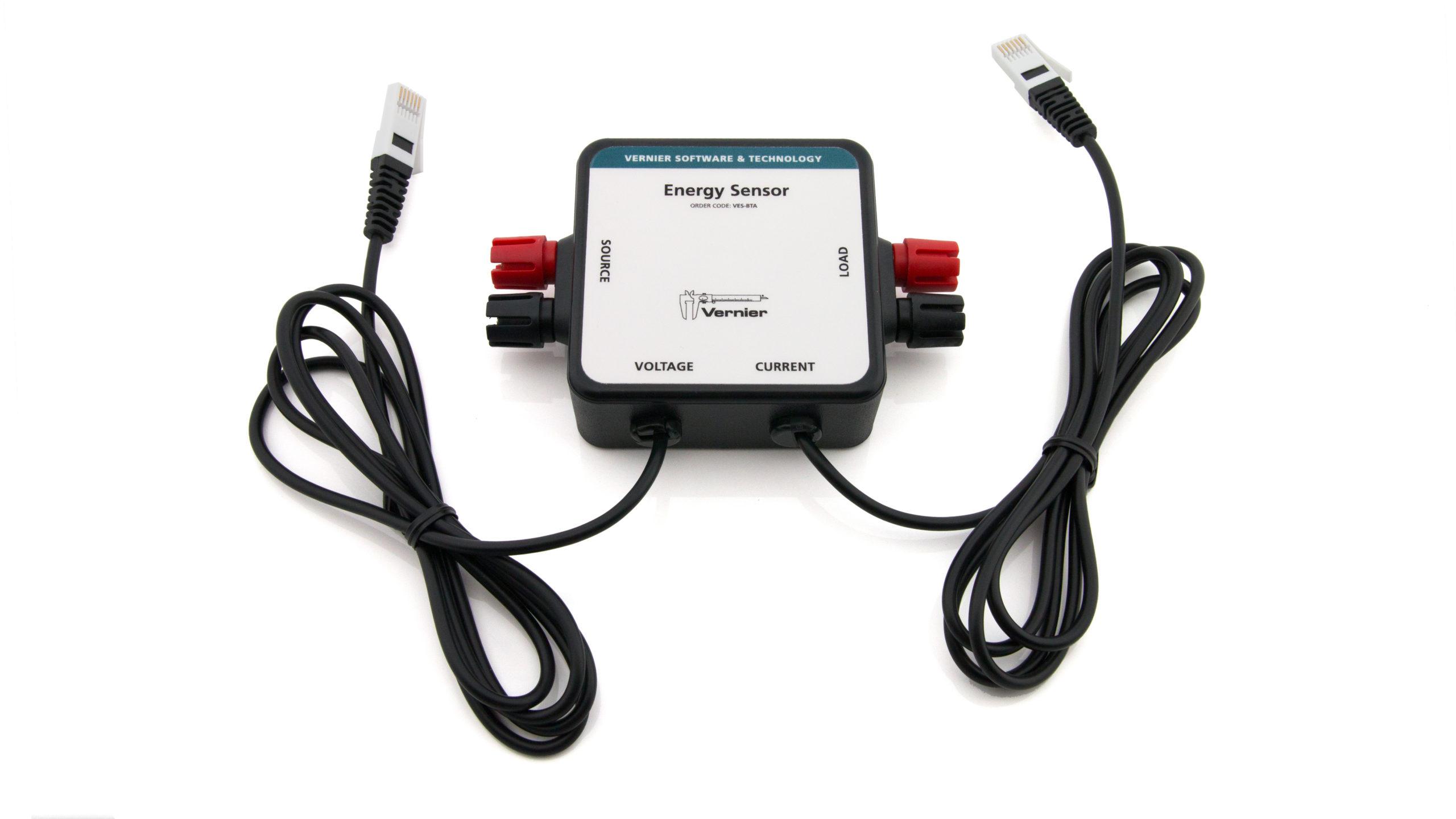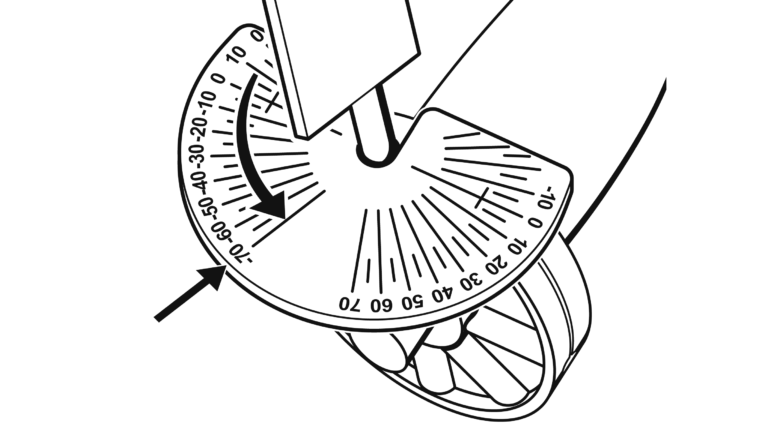
Introduction
Do you know that the air you breathe is actually made up of atoms? When you are running down the street or moving fast on a bike, have you felt wind blowing on your face? What you are feeling is atoms hitting your skin!
When blades move through the air, they also run into the atoms that make up air. The atoms cause resistance, just like the resistor in a circuit reduces the flow of electrons in a circuit. The resistance a blade feels when it moves through air is called drag.
Blade design engineers try to reduce the amount of drag experienced by blades while maximizing power output. One of the ways they do this is by changing the pitch or angle of a blade. In this experiment, you will explore the relationship between blade pitch and wind turbine output.
Objectives
- Measure power output of a wind turbine with a Vernier Energy Sensor.
- Investigate how blade pitch affects power output.
- Determine optimal blade pitch for maximum power output.
Sensors and Equipment
This experiment features the following sensors and equipment. Additional equipment may be required.
Ready to Experiment?
Ask an Expert
Get answers to your questions about how to teach this experiment with our support team.
- Call toll-free: 888-837-6437
- Chat with Us
- Email support@vernier.com
Purchase the Lab Book
This experiment is #6 of Investigating Wind Energy. The experiment in the book includes student instructions as well as instructor information for set up, helpful hints, and sample graphs and data.

